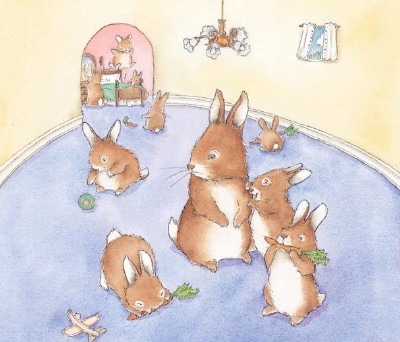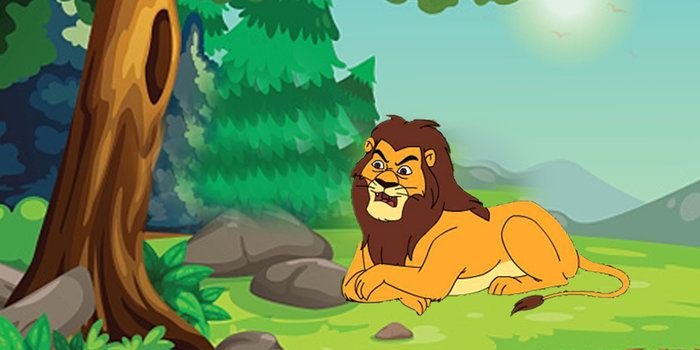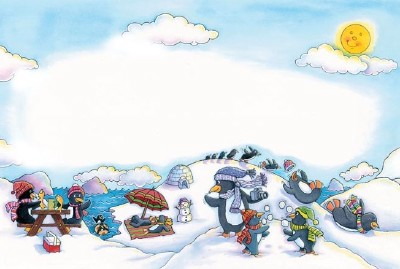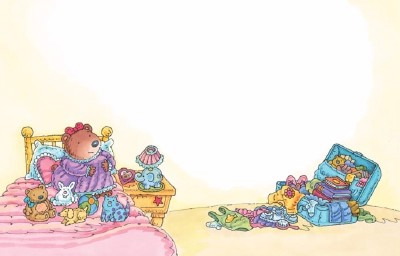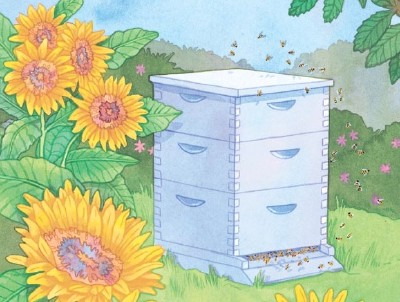 The farmer’s beehives sit in a field of tall, yellow sunflowers. The beehives do not look very fancy. They are made from stacks of wooden boxes. Each wooden box has a special bottom, like a screen, just perfect for a bee to build a home. An opening at the bottom of the hive is where the bees come and go.
The farmer’s beehives sit in a field of tall, yellow sunflowers. The beehives do not look very fancy. They are made from stacks of wooden boxes. Each wooden box has a special bottom, like a screen, just perfect for a bee to build a home. An opening at the bottom of the hive is where the bees come and go.
This hive is home to thousands of honeybees. They live together in a colony. The honeybees make honey and beeswax that the farmer sells. They feed on flowers, trees, and vegetable fields on the farm. By feeding on the plants and carrying the plants’ pollen from one flower to another, the honeybees help the plants to grow.
Honeybees start their lives as tiny eggs. In spring, the young bees begin to hatch. A honeybee does not have eyes, wings, or legs until it is at least two weeks old. At this stage it is called a larva. Until its body forms, the baby bee lives in a tiny, six-sided cell made from beeswax. These cells put together make honeycombs. The other bees in the hive must feed the baby bees while they live in these cells.
This baby bee is almost three weeks old. She is crawling out of her cell for the first time. To get out, she must eat a hole through one wall of her cell. It is hard work!
The newborn honeybee goes to work right away. She is born knowing what her job is in the hive.
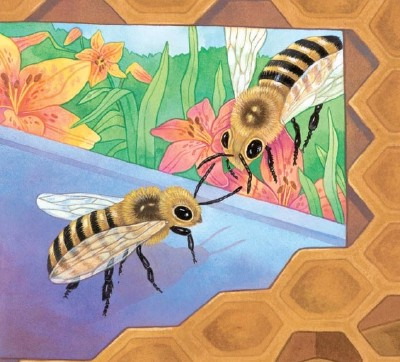 The little bee crawls in and out of empty cells. She makes sure they are clean. The queen bee will only lay eggs in clean cells. Young female bees like this bee are called workers. They take care of the hive and gather food.The queen bee is the only bee that lays eggs for the hive. And male bees help the queen to lay her eggs. The little bee will not leave the hive for three weeks. During this time, she is a “house bee.” She helps clean the hive. She feeds baby bees. And she builds new cells in the hive with beeswax.
The little bee crawls in and out of empty cells. She makes sure they are clean. The queen bee will only lay eggs in clean cells. Young female bees like this bee are called workers. They take care of the hive and gather food.The queen bee is the only bee that lays eggs for the hive. And male bees help the queen to lay her eggs. The little bee will not leave the hive for three weeks. During this time, she is a “house bee.” She helps clean the hive. She feeds baby bees. And she builds new cells in the hive with beeswax.
Beeswax is like cement. The little bee makes the beeswax with her body. She carefully takes bits of beeswax from her belly and builds new cells. Some cells will hold baby bees. Others will store honey and food for the colony. When the bees have made enough honey, the farmer will take some honey from the hive. He will leave enough for the colony to eat. 
The young honeybee is growing. She is almost ready to leave the hive. She has one last job as a house bee, though. It is a very important job. She must guard the entrance to the hive. Other animals, even other bees, will try to steal honey from the hive.As she stands guard, a robber bee from another hive tries to sneak past the little bee to steal food. The little bee touches the robber bee, and right away she knows the bee is not from her colony. The little bee pushes the robber bee away from the hive, and the stranger flies away. The hive is safe again! The little honeybee is ready to take her first flight! Now she is called a field bee. She will begin to collect food for the hive. When her wings move up and down very fast, they make a buzzing sound. Soon the little bee rises into the air. She circles around the hive many times to learn what her hive looks like so she can find her way back to it. Her next flight will be to the farmer’s fields to find food.
 The little honeybee buzzes through the summer air. She is looking for just the right flowers. She looks for flowers with bright colors and a sweet scent. Her special eyes help her find which flowers are filled with nectar. When the little bee finds a clover, she lands and sips the liquid nectar from the flower with her tongue.
The little honeybee buzzes through the summer air. She is looking for just the right flowers. She looks for flowers with bright colors and a sweet scent. Her special eyes help her find which flowers are filled with nectar. When the little bee finds a clover, she lands and sips the liquid nectar from the flower with her tongue.
The little honeybee will fill her tummy with sweet nectar and take it back to the hive. The nectar mixes with a special enzyme that bees have in their honey stomachs. This mixture is called honey. The honey is then stored in one of the beeswax cells that the little bee helped to make in the hive.
As the little bee collects nectar, she also gathers pollen from flowers. Pollen looks like yellow dust. The pollen sticks to the bee’s furry legs. She brushes the pollen into little baskets on her back legs.
The bee visits many different flowers when she feeds. Some of the pollen that she has collected from one flower falls onto a new flower. When the pollen from one flower mixes with another, a seed will form. The seed makes a new plant. This is called pollination.When the little bee’s baskets are full, she takes her pollen back to the hive. The pollen will be stored for food. The little bee returns to her hive. She gives her load of nectar and pollen to a house bee. 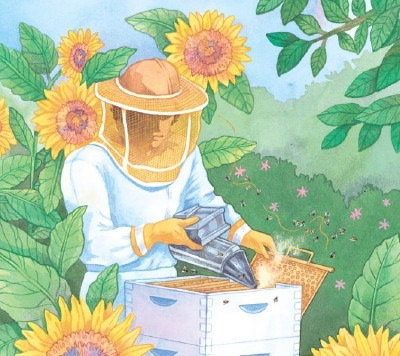
The little bee flies farther into the hive so she can tell her brothers and sisters where she found the tasty food. She does a dance! The little bee turns in a circle and wiggles her body. These movements let the other bees know how far away the flowers are. The movements also tell the bees what direction to fly to find the food.
The little bee also gives off a smell that tells the other workers what kind of flowers she found.
It is time for the farmer to harvest, or collect, the honey from the hive. The farmer sprays smoke in the top box of the hive. The little bee does not like the smoke, so she crawls to the bottom of the hive with the other bees. This smoke also makes the bees move really slowly which means the farmer has less of a chance of getting stung after spraying the smoke.The farmer lifts some honey-filled cells from the top box and removes the honey. She leaves enough honey for the colony to eat. She’ll take the honey home where it will be processed, stored in a jar, and sold to customers.
After the farmer has harvested as much as she needs, the bees know the hive needs to make more honey. A cloud of worker bees buzzes around the hive. They are getting ready to look for more food. The little honeybee is with them. This is what she was born to do. She will spend the rest of her life flying in search of food for her big family.

